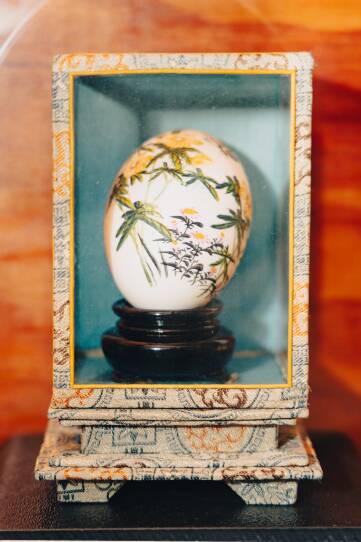At the Revere History Museum, you can see laborers hustling in and out, shuttling building material hither and yon.
Clear plastic grips the old, red carpet, and tarp covers precious items in the museum’s collection, protecting them from the agitated dust. The building that houses the museum’s collection is due for some upgrades; it’s been entirely re-wired, and a new HVAC system will help preserve
individual items.
The building at 108 Beach Street shows every bit of its 123 years, so an extensive renovation comes as no surprise. But it’s not just the building undergoing transformation — the collection itself is, too.
Once the renovation is complete later this year, the curious who walk through these doors will engage with some familiar items from Revere’s past, like a World War I–era doughboy uniform and a detailed diorama of the Revere Beach boardwalk. But they’ll also see something new: a permanent room dedicated to Revere’s immigrant history.

Since the area that is now the city of Revere was first settled by Europeans in the 17th century, it has hosted pockets of English, Irish, Germans, Italians, and Bosnian communities. Over the last century, more people have come from countries in Africa and Central and South America, like Colombia, Honduras, Mexico and Morocco.
Brendan O’Brien, president of the Revere Society for Cultural and Historical Preservation, said the idea came organically, with locals donating or loaning items.
“A person from the Bosnian community, who came here in the ’90s fleeing from the war, brought us some embroidery and coffee pots to represent their country in the exhibitions of the museum,” O’Brien said. “[And] one person from Morocco gave us a doll collection that shows their typical dresses.”
Then, after the museum put out a call for more items, donations of people from all over the country began flowing in — and with them, the idea of creating a room to show how they have helped to shape Revere, he said.
Representing the community
The museum’s director of operations, Toby Pearlstein, said the collection reflects the community itself now better than before.
“If you came here and you see the collection, you don’t necessarily see yourself, and we have that feedback from people who came here to visit us,” Pearlstein said.

Now, the collection includes Chinese scripts, Cambodian poems and Brazilian soccer memorabilia. And they’re not stopping there.
“Pieces have to be related to the culture, have to be related to the residents,” Pearlstein said.
The museum has registered the changes of Revere over the years.
Take Shirley Avenue, for example. What was once a thriving Jewish community gave way to the emergence of new ethnic enclaves of Cambodian and Latin American immigrants during the 20th century.
Historian and Salem State University professor Jeff Pearlman said he’s seen tremendous changes, even within the last five years.
“It is imperative that there’s a room in the museum dedicated to immigration, especially for our students,” he said. “It is imperative that they learn about the changing demographics of our city and how it’s making our city more diverse and better.”
And the idea has expanded beyond a solitary room. The building renovation has given museum staff time to reassess how they display the items already in their collection.
The museum will partially reopen to the public in October, with a full reopening scheduled ahead of the museum’s holiday events.






